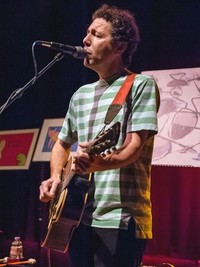Yo La Tengo

Yo La Tengo started out as Velvet Underground disciples on the East coast alternative underground, and ended up hailed as one of the most forward-looking practitioners of highly textured, sometimes almost ambient indie pop. Equally influenced by post-punk and '60s rock, husband and wife Ira Kaplan (vocals, guitar) and Georgia Hubley (drums, vocals) formed the band in 1984 and remained at its helm throughout. After adding guitarist Dave Schramm (ex-Human Switchboard, later of The Schramms) and bassist Dave Rick they released their first single in '85. By the time they unleashed their debut album, Ride the Tiger, the following year, Mike Lewis had taken over on bass, one in a long line of bass players until James McNew solidified the position in '92. Yo La Tengo soon took its place at the forefront of the Hoboken indie scene, becoming college radio mainstays. Their second album, 1987's New Wave Hot Dogs, underlined the band's Velvet Underground obsession by including a cover of the VU song "It's Alright (The Way That You Live)" while still edging their artistic evolution forward. 1989's President Yo La Tengo was regarded as a milestone in the band's catalog and contained one of their most popular early tunes, "Barnaby, Hardly Working." At heart, Yo La Tengo was both enormously eclectic and deeply entrenched in music history; both facts were borne out when they released the acoustic-based covers album Fakebook in 1990, featuring tunes by everyone from The Flamin' Groovies to The Holy Modal Rounders. 1992's May I Sing With Me was the first album to feature bassist James McNew, solidifying the YLT lineup that would remain in place for decades to come, and marking a major transition. By 1997 the band had entered into a new era with the releases of I Can Hear the Heart Beating As One. Unfettered in its stylistic range, the album encompassed everything from noisy experimentalism to hazy, gently lyrical tunes and even a punked-up cover of a Beach Boys song. It earned the band more critical attention than ever before and a whole new audience. Yo La Tengo continued to push the envelope with the 2000 follow-up, And Then Nothing Turned Itself Inside-Out, expanding their appeal still further, and even creeping into the bottom rungs of the U.S. Top 200 album chart. Kaplan, Hubley, and McNew continued pursuing their muse to its farthest-flung corners, earning themselves indie-rock icon status in the process.